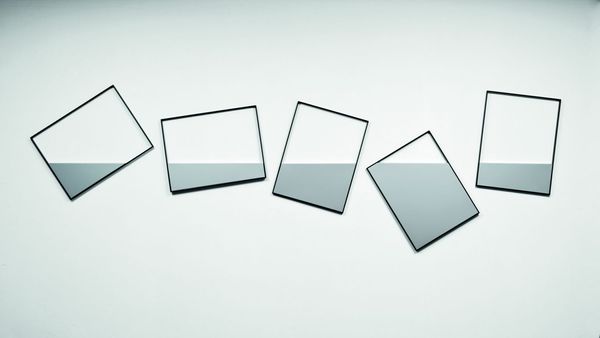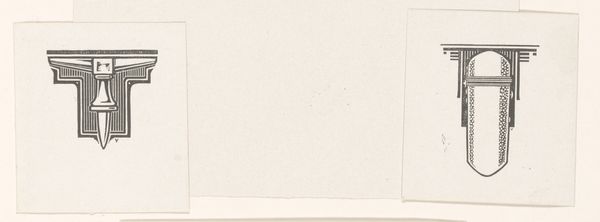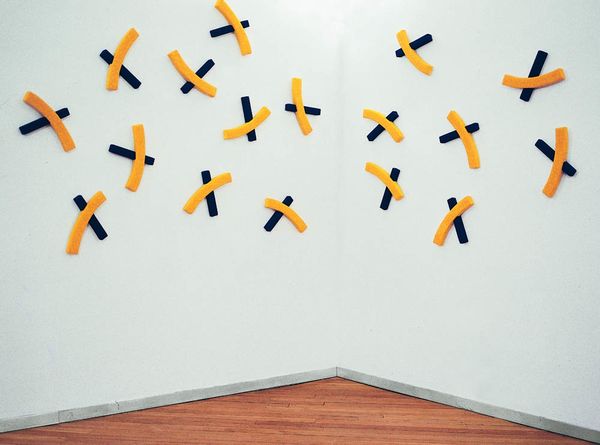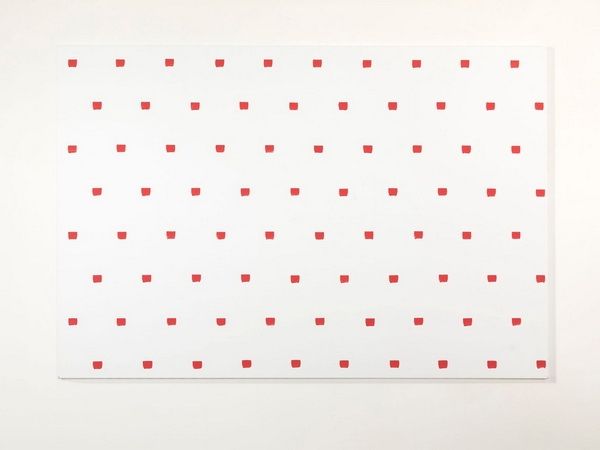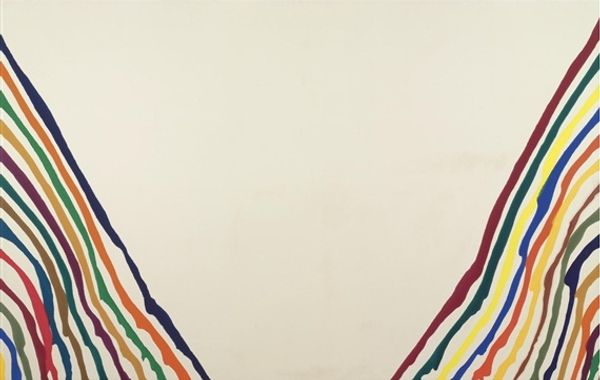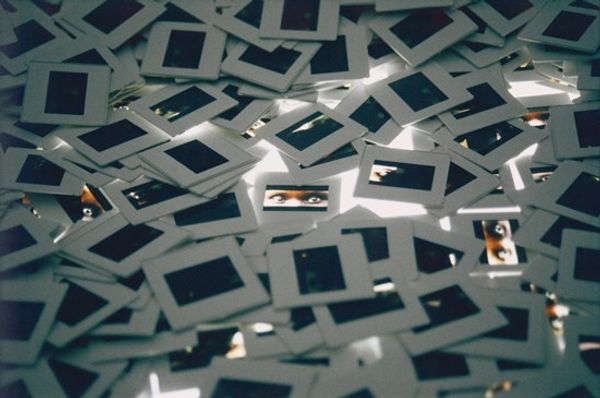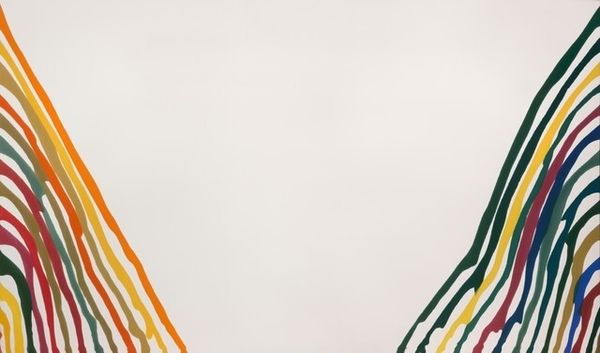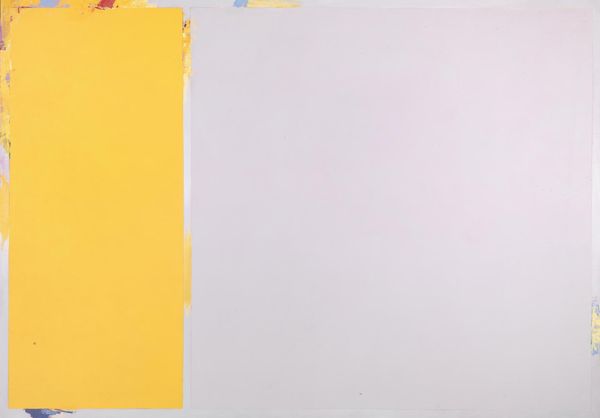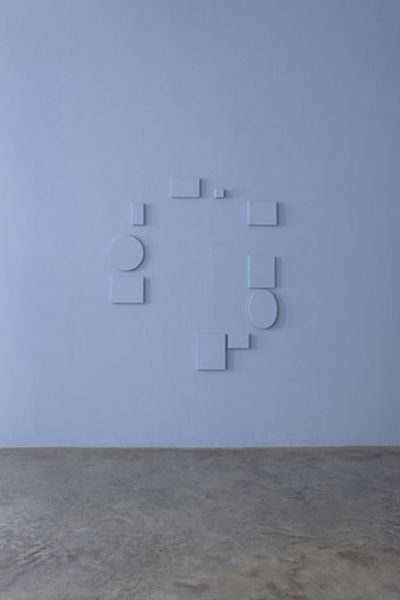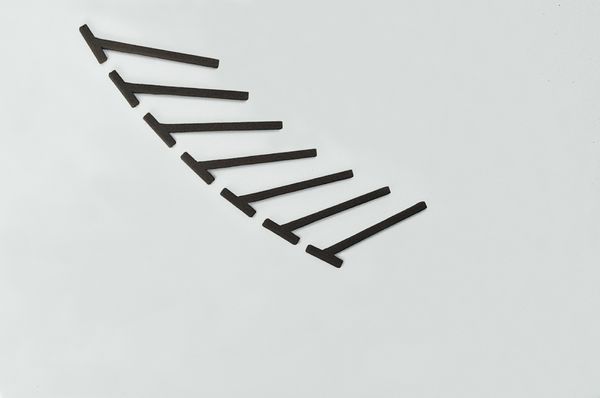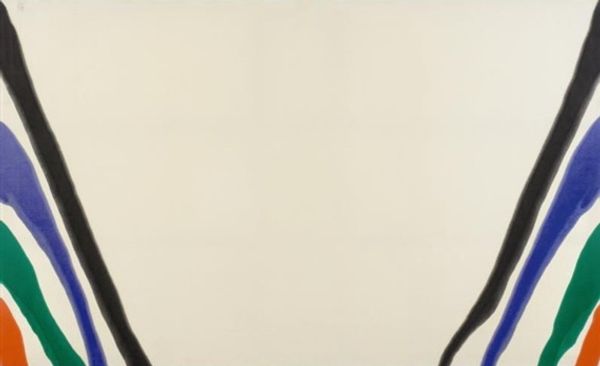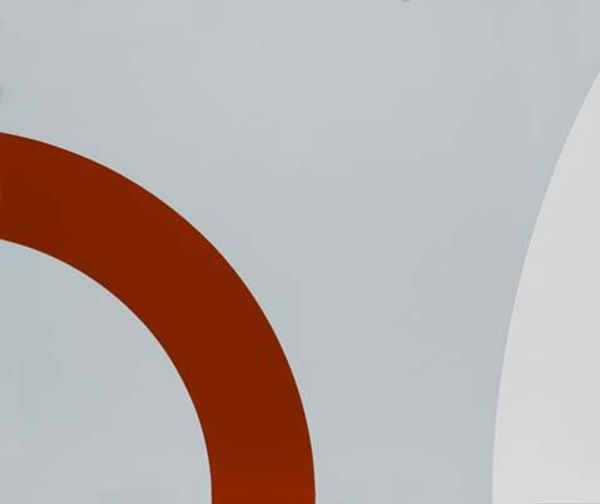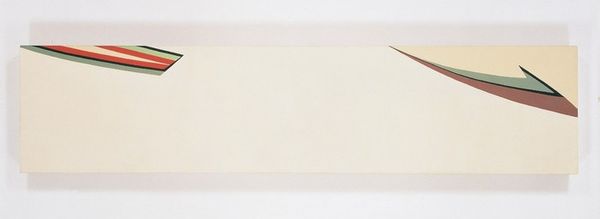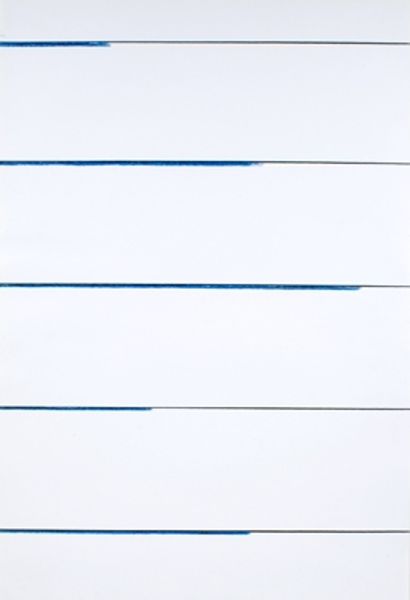
painting
#
conceptual-art
#
painting
#
minimalism
#
geometric
#
abstraction
#
monochrome
Copyright: Olivier Mosset,Fair Use
Curator: We’re now looking at Olivier Mosset’s "Untitled (A)" from 1966. What immediately strikes you about this piece? Editor: Well, first, there's this sense of stark isolation, isn't there? Two nearly identical squares, each bearing the letter 'A', spaced widely apart on a white field. A bit unnerving, almost like two orphans in a vast, indifferent space. Curator: It’s an intriguing starting point. Mosset's work here typifies some key tenets of minimalism and early conceptualism. Notice how he strips away almost everything except for the fundamental form: the letter itself, and the means of its presentation. We might consider it an inquiry into the basic construction of art, the making of painting and image. Editor: And the letter 'A' itself... what’s the significance? It feels archetypal. Is it about beginnings? Authority, maybe? Like something fundamental and omnipresent. The boards and letters look almost stenciled, making me wonder about production, like simple signage... Curator: Precisely. Mosset, along with the other B.M.P.T. artists, sought to challenge notions of artistic genius and originality. The repetitive gesture, and here the silkscreening of simple letters, hints at industrial production methods, at labour, rather than some innate, inspired skill. It suggests a seriality... a commodification, even. The letter is almost like a brand, mass-produced in near identical forms. Editor: So it's a play on these established images—familiarity challenged by repetition and subtle variation. Is this monochrome intended to evoke an intellectual or almost empty feeling? Curator: I suspect that is quite intentional. By refusing a rich palette or expressive brushwork, Mosset forces us to confront the materials, the surface itself, and the implications of its manufacture. We should remember that his monochromes were very radical challenges at the time. He invites us to consider not what is represented but what constitutes its making and dissemination in culture. Editor: Very illuminating! It feels more charged than initially appeared, knowing the underlying questioning of production and image making, especially from the ‘60s. Curator: Exactly. So much more than simple geometry, right? It pushes us to reconsider not only the image but the act of perceiving and, more profoundly, of producing art and its relationship to consumption.
Comments
No comments
Be the first to comment and join the conversation on the ultimate creative platform.
